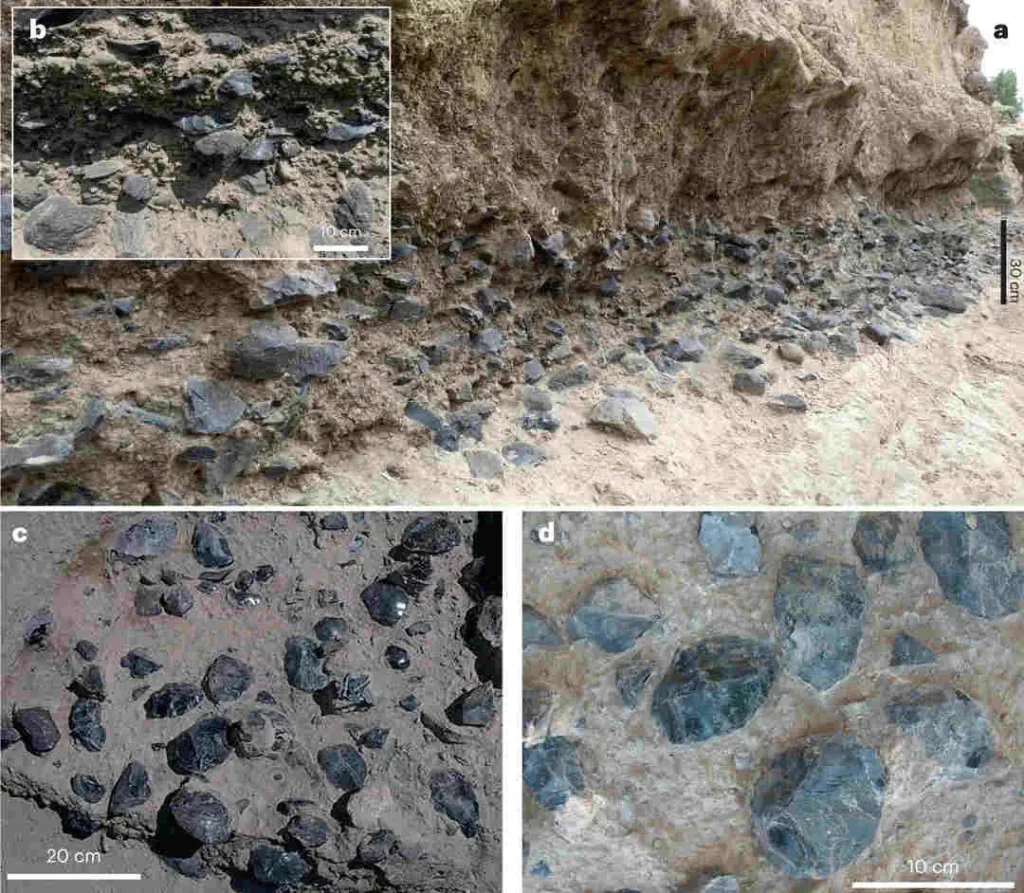A ancient “knapping workshop” with approximately 600 obsidian handaxes that date back at least 1.2 million years has been discovered in Ethiopia.
Handaxes, frequently referred to be humanity’s “first great innovation,” are made via the knapping method.
Handaxes were made by chipping shards off a chunk of stone to create a sharp edge, and were held in the hand rather than affixed to handles. They are distinguished by their teardrop or pear form. They were fashioned from flint or, subsequently, obsidian, a form of volcanic glass.
The first handaxes in the palaeontological record were discovered in Tanzania’s Olduvai Gorge at least 1.5 million years ago. Around 500,000 years ago, handaxes are said to have spread over Africa, South Asia, the Middle East, and Europe. They were still being manufactured 40,000 years ago. For such a long period, no other cultural artifact has been known to exist.
According to previous study, knapping workshops first appeared in the archaeological record in Europe several hundred thousand years ago – up to 774,000 years ago. The Ethiopian discovery roughly doubles previous estimates.
According to the news of Cosmos, the researchers discovered 578 obsidian handaxes buried in mud, with the exception of three. By analyzing the material surrounding the instruments, they were able to determine their age.
The axes’ structure was comparable, indicating that an old knapping workshop had been uncovered.



It is unknown which hominins created the tools. Homo erectus, which appeared approximately 2 million years ago in Africa and vanished from the fossil record as recently as 100,000 years ago, looks to be a viable contender.
What the data does indicate is a level of planning that is frequently attributed to later human forebears. The handaxes were pre-crafted and stored, implying that the idea of creativity and preparation existed in these 1.2 million year old human forebears.
The researchers write that: “It has been argued that, in earlier times, multiple activities of everyday life were all uniformly conducted at the same spot. The separation of focused activities across different localities, which indicates a degree of planning, according to this mindset, characterizes later hominins.”
Cover photo: IFL Science
